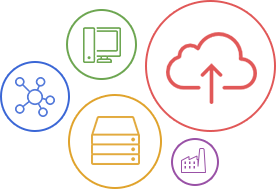In today's digital age, IT systems have become the backbone of businesses, directly influencing productivity levels. By optimizing these systems, organizations can streamline operations, reduce downtime, and increase overall efficiency. This article explores the importance of efficient hardware, software, and network configurations and delves into strategies like automation, workflow optimization, and system integration to boost productivity.
Also Read: What Exactly Is Hardware Configuration?
Hardware, Software, and Network Configurations
"One of the most fundamental ways to optimize IT systems for productivity is to ensure efficient hardware, software, and network configurations."- Emil Isanov
The choice of hardware should align with the business's specific needs and objectives. Modern, high-performance hardware can dramatically enhance productivity by speeding up processing times and reducing the risk of downtime due to hardware failures.
Similarly, software selection should prioritize programs and applications that support the specific tasks and processes your team handles daily. The right software can help staff members work more efficiently and accurately, reducing time wastage.
Effective network configuration is another crucial aspect of IT optimization. This involves structuring the network to ensure fast, reliable, and secure communication between different parts of the organization and with external entities. Adequate bandwidth, secure connections, and minimal latency are key factors to consider for efficient network configuration.
Also Read: What Is Network Management And How Can It Help Your Business?
Automation and Workflow Optimization
Automation is a powerful tool for boosting productivity. By automating routine, manual tasks, organizations can save time, reduce the risk of errors, and free up staff to focus on more strategic, value-added activities.

Workflow optimization involves examining the entire process of work tasks, identifying bottlenecks or inefficiencies, and refining the process to enhance productivity. This often involves the use of workflow management software, which can automate tasks, standardize processes, and provide valuable analytics for further optimization.
System Integration
Integrating IT systems with other business processes can lead to significant productivity gains. This could involve integrating your customer relationship management (CRM) system with your email marketing platform, for example, allowing for seamless communication and data sharing between the two.
Integration reduces manual data entry, minimizes errors, and ensures that all parts of the business have access to the same up-to-date, accurate information. Furthermore, it allows for more comprehensive analytics, as data from multiple sources can be combined and analyzed to provide more insightful business intelligence.
Conclusion
Optimizing IT systems can significantly boost productivity and streamline operations within an organization. By ensuring efficient hardware, software, and network configurations, leveraging automation and workflow optimization, and integrating IT systems with other business processes, organizations can enhance efficiency and reduce manual effort. These improvements can free up valuable time, enabling staff to focus on tasks that drive business growth and innovation.
.png)
Facebook: facebook.com/etech7
Twitter: twitter.com/etech7
Instagram: instagram.com/etech_7/
Blog: blog.etech7.com/














